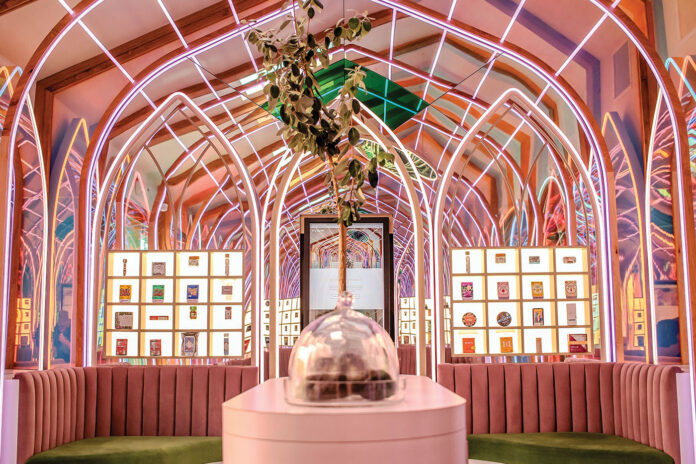
This article is part of a series of historical perspectives about the legal cannabis industry.
No longer small, dank outposts on the fringes of town, today’s dispensaries are bright, well-furnished, technology-forward operations staffed by meticulously trained professionals. From Sparc in mg’s very first issue through Gotham in November 2023, these twenty-five shops set new standards in retail design. With few exceptions, they’re still operating.
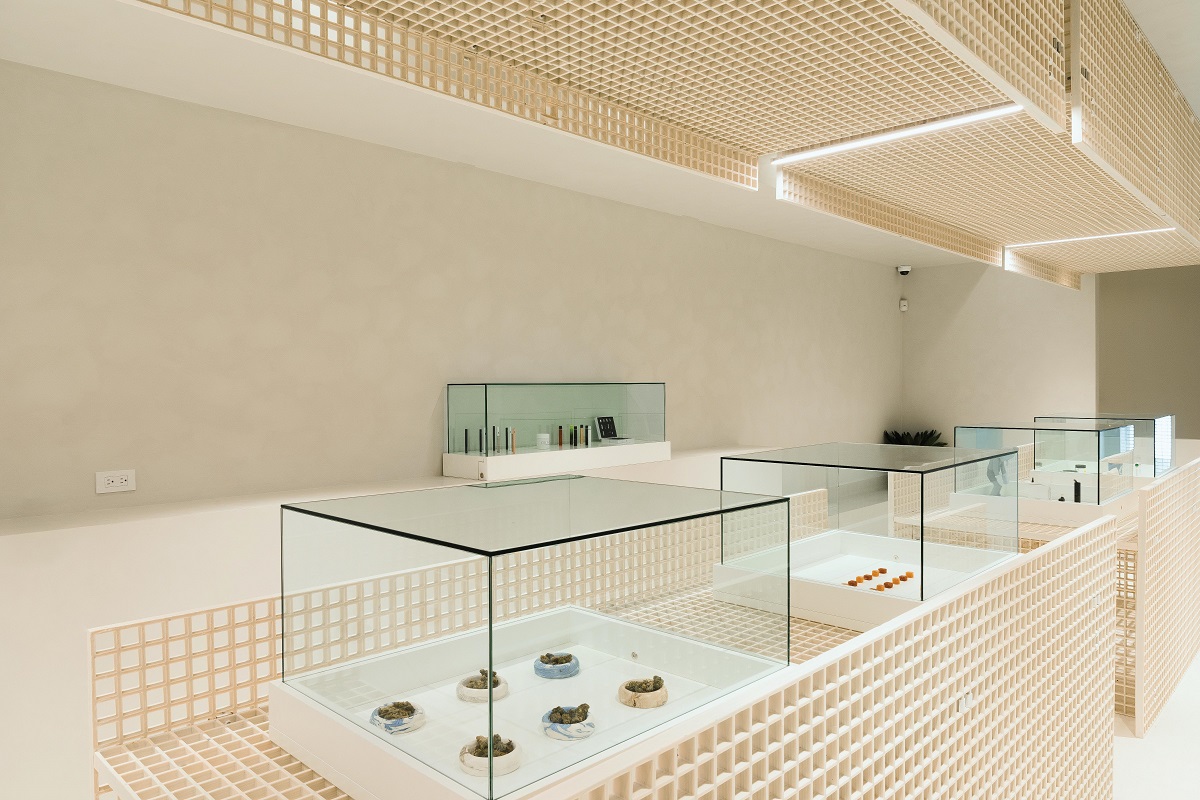
Owned and built by a venture capitalist and founding director of the Cronos Group, Edition is intentionally hyper-minimalist from its industrial fiberglass gridwork—a first in retail interior design—to its tightly curated product selection. Ryan Roebuck envisioned the store as a space where well-heeled millennials like him could admire plant products and accessories as art.
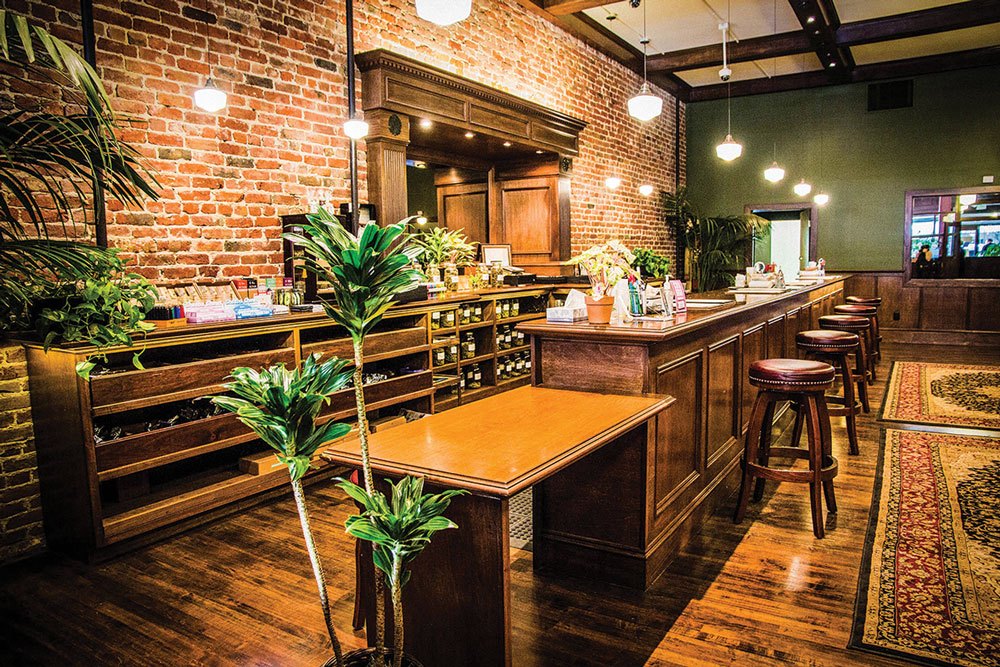
Part Old West saloon, part Prohibition-era speakeasy, with dashes of private cigar club thrown in, Barbary Coast evokes San Francisco’s past. By decorating with Victorian couches, exposed brick walls, strategically placed leafy ferns, a girl in a feather headdress atop a vintage piano, dark woods, and floral-patterned wallpaper, the owners created one of the earliest destination dispensaries.
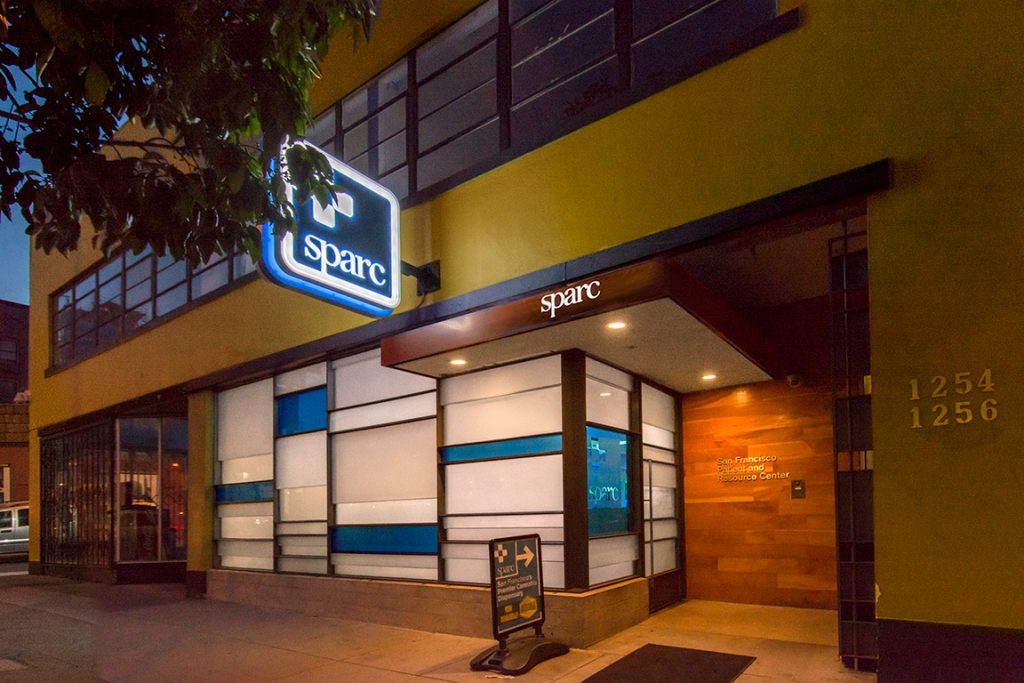
Founded in 2009, Sparc quickly became known as “the Apple Store of marijuana shops” thanks to what then was a very progressive design aesthetic. A cascading grid of steel and glass formed the front wall, vaguely bong-shaped lights made of borosilicate science glass dripped from the ceiling, and steel shelving held dozens of apothecary-style wood boxes, each containing a different product. Alas, the iconic original Sparc is no more.
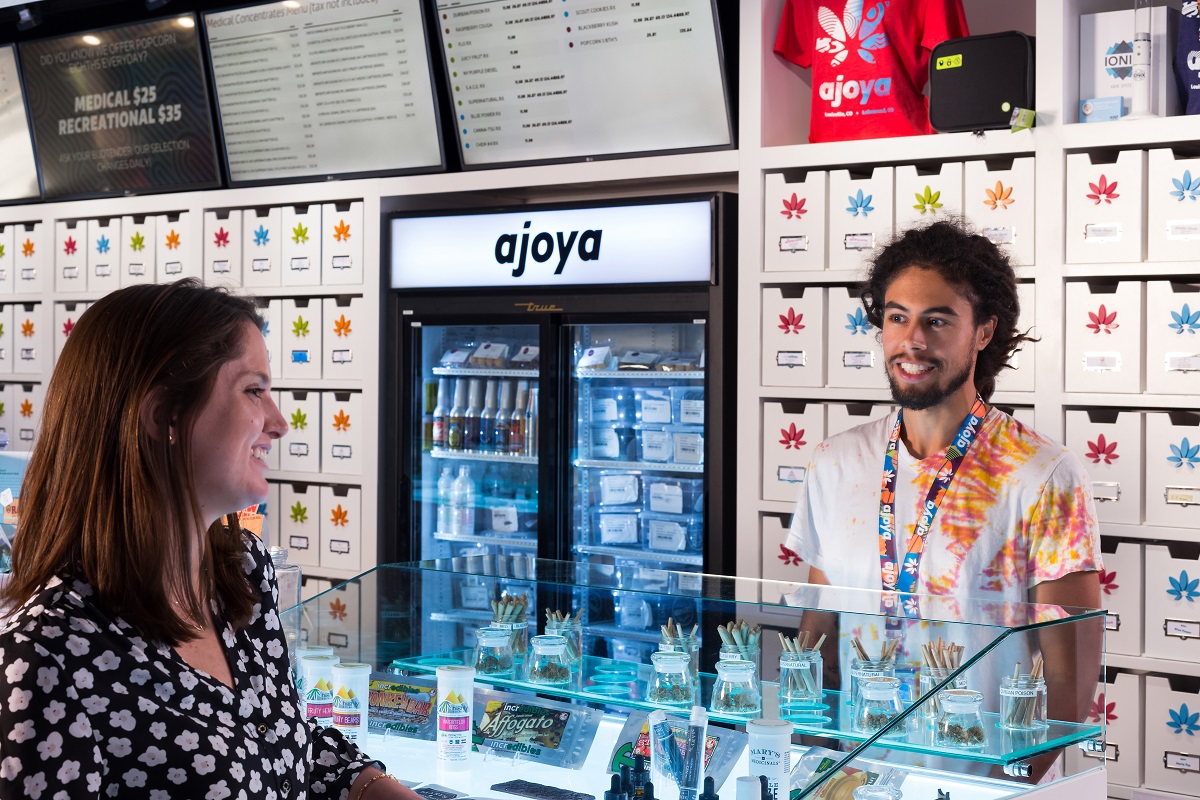
With its clean, curvy, and predominantly white futuristic pharmacy vibe, polished concrete floors, glossy stools, glowing countertop displays, exposed ceilings, and a color-coded menu ordering system—which was revolutionary for the time—Ajoya’s 2,000-square-foot shop was among the vanguard in the recreational market. Its polished confidence accomplished the owners’ goal: to “change the way people experience being a cannabis consumer.”
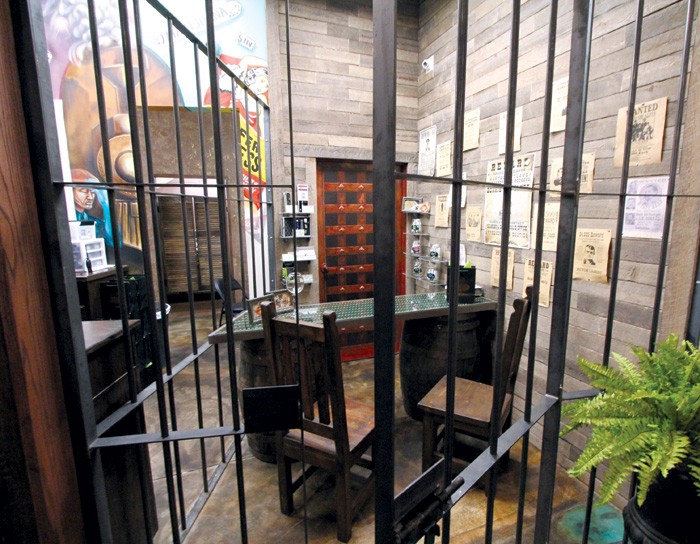
SmokinGun offered a trip back in time to the Wild West, complete with an authentic jail cell and a teller booth from the Bank of Hibernia circa 1870. A “Prohibition museum” inhabited the jail cell as part of a commitment to raise awareness of the war on drugs. The remodeled location, sans museum, is now a Star Buds.

Now billed as the largest dispensary in the world at more than more than 40,000 square feet, Nuwu was a modest-by-comparison 15,800 square feet when mg featured the Paiute Tribe’s showplace shortly after it opened. The store’s atmosphere evokes a European outdoor bazaar. From the get-go, Nuwu offered a novel twenty-four-hour drive-through window. Today, the cavernous space also features Nevada’s only licensed consumption lounge and dab bar, complete with live entertainment.
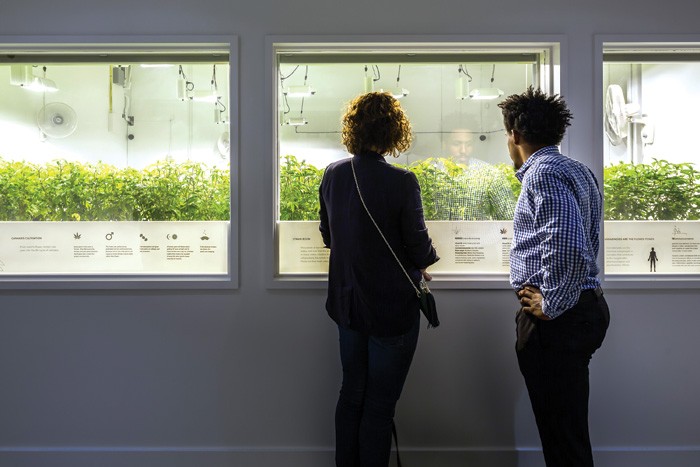
Vela was among the first dispensaries to feature an onsite grow room, extraction lab, and processing facility customers could view through large, glass windows. The shop’s “otherworldly entryway” hosted a liquid-inspired full-wall mural leading into a large sales floor with plenty of room to move and interact without feeling smothered by the products. Sadly, Vela’s concept was slightly ahead of its time, and the business closed in April 2018.
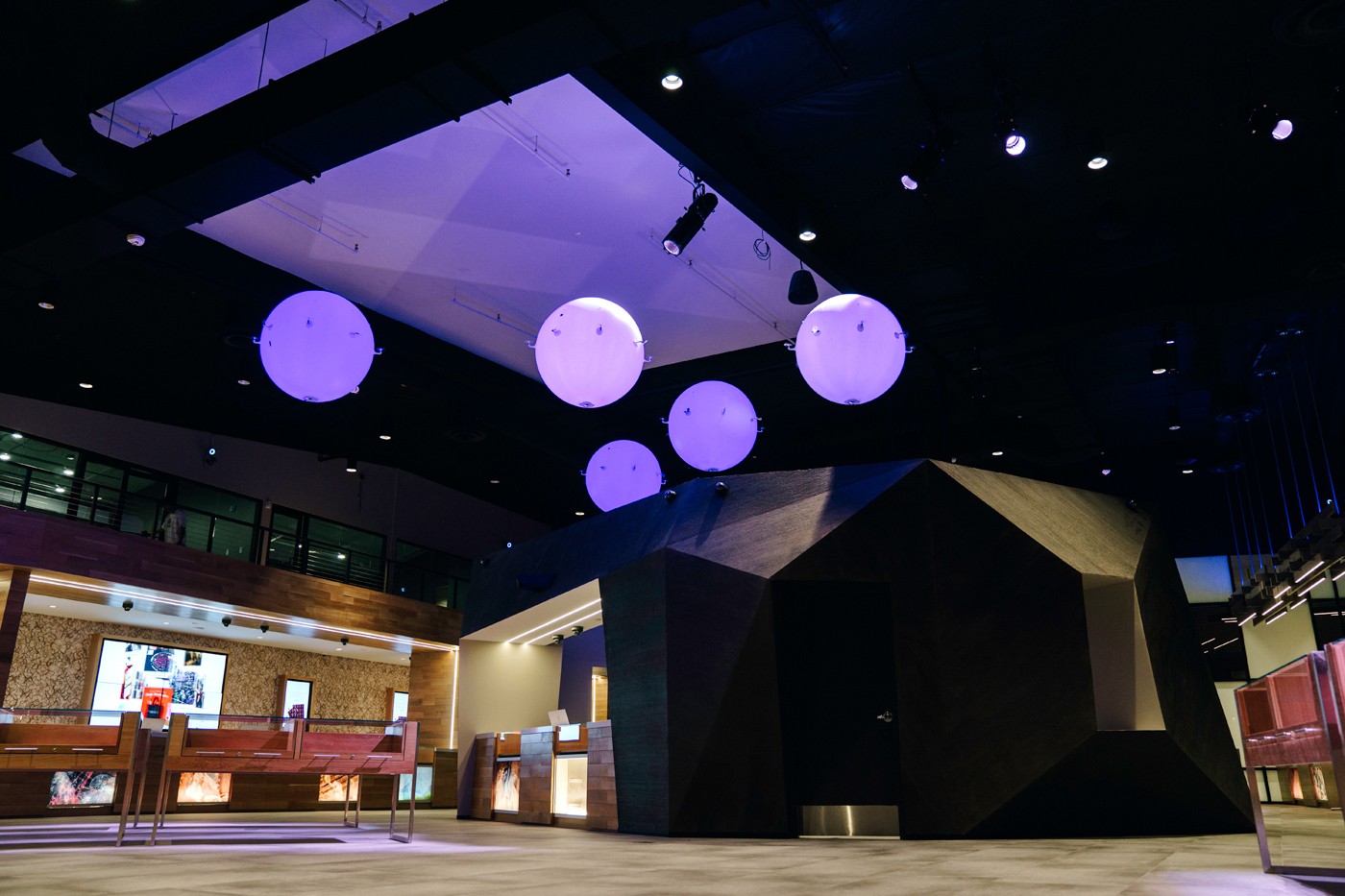
Las Vegas’s Planet 13 is as over the top as the city itself. Comprising about 40,000 square feet of space, the shopping-and-entertainment center incorporates vivid visuals and interactive elements guaranteed to attract a crowd, including LED flooring that responds to every footstep. A restaurant opened inside the complex in 2020, and a consumption lounge is planned for early 2024.
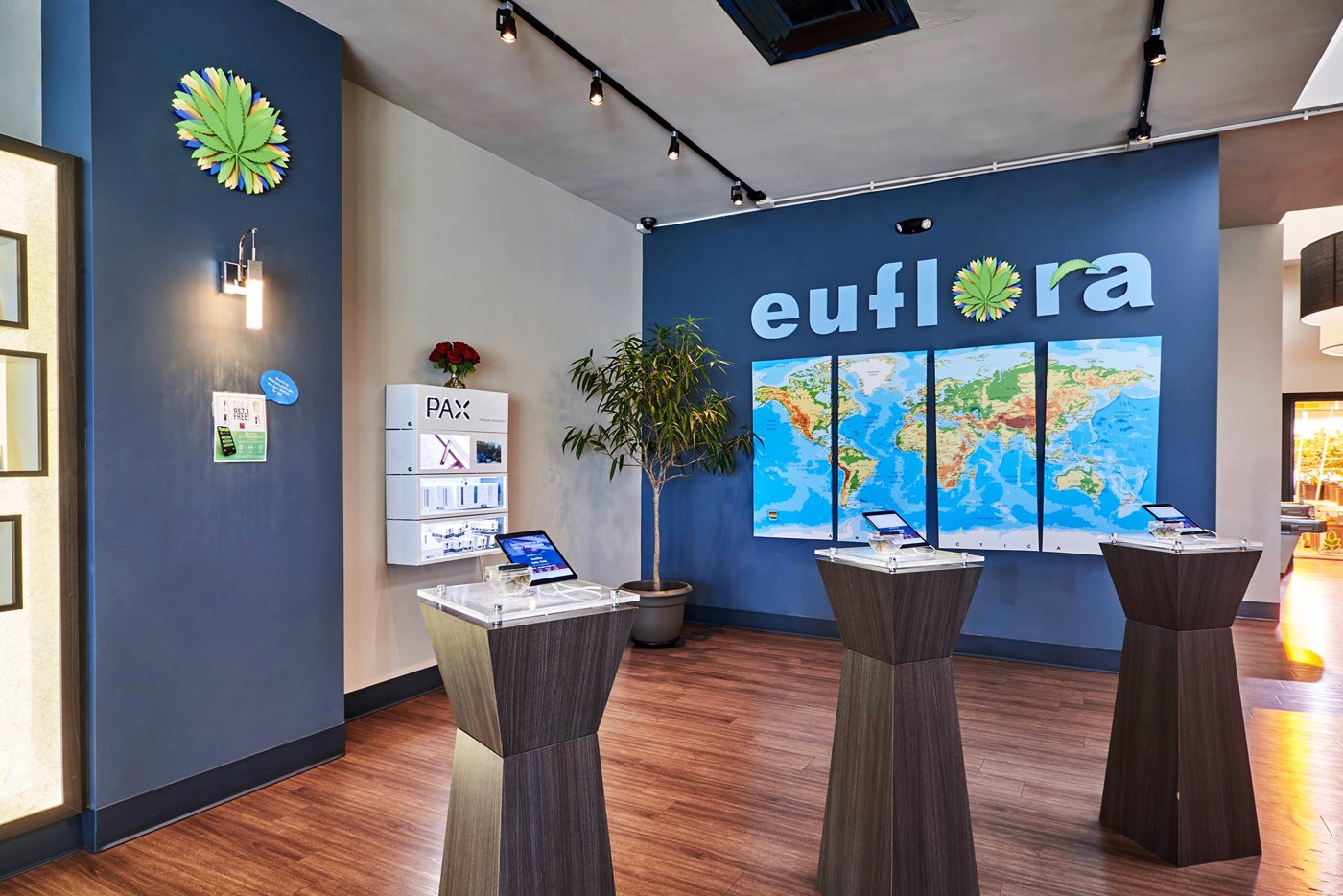
Now part of the JARS retail chain, Euflora 3D—the first licensed recreational shop in Colorado—leaned heavily into education and technology from the beginning, providing iPads loaded with product info and developing its own online ordering platform. An onsite grow room allows customers a rare-in-Colorado opportunity to watch cultivators at work.

Decked out in vintage supper-club splendor, Moe Greens is a love letter to San Francisco’s storied past, according to the owner (who also designed Barbary Coast). The lounge’s mid-twentieth-century throwback aesthetic, complete with custom terrazzo floors, exposed brick walls, and custom Sputnik lighting fixtures, transports customers into another era while they relax in their choice of vaping room, dab lounge, or smoking parlor.
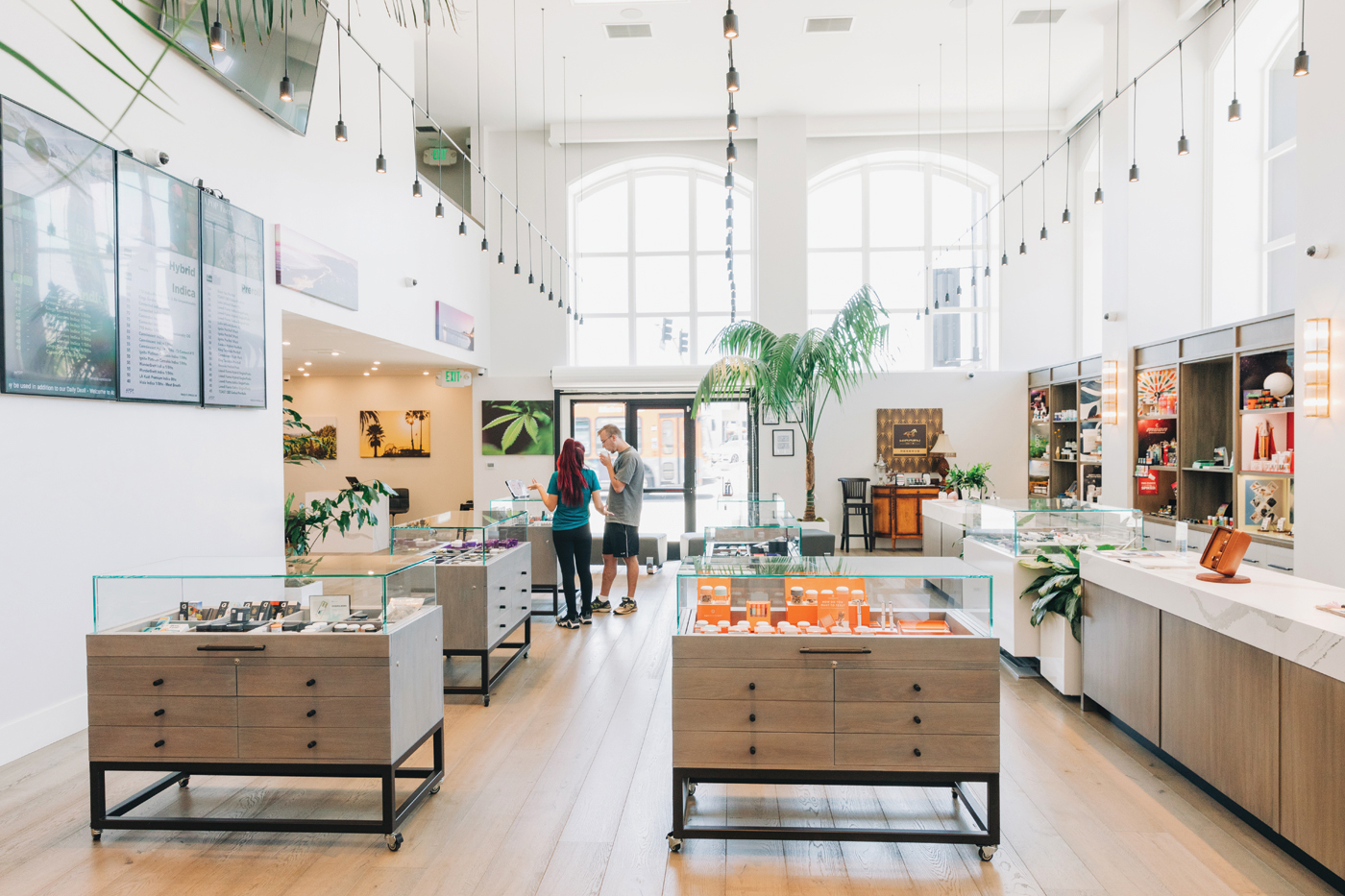
Housed in a former boutique gym, Atrium’s elevated ceiling and walls of windows give the dispensary an uncommonly spacious appeal. Within shouting distance of affluent Topanga Canyon, the shop’s design is an unmistakable reflection of its clientele. Products fairly glow in the abundant natural light playing over, around, and through modular glass cabinets. The dispensary was an early adopter of the “shop-in-shop” concept, featuring boutique-like zones for big brands
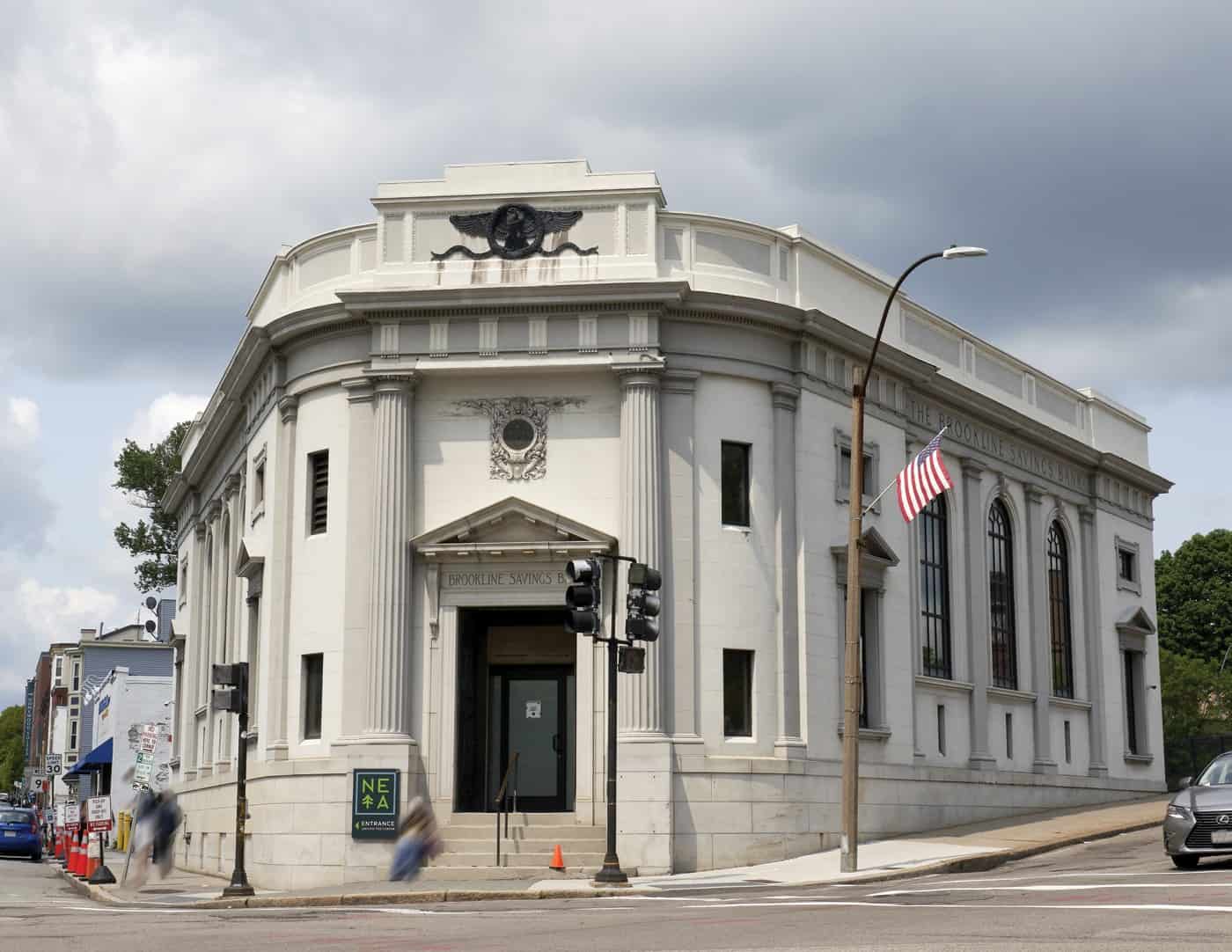
NETA’s owners preserved the Beaux Arts architecture of the 1922 Brookline Savings Bank, including the grand vault and a domed glass ceiling. One of the most unique cannabis spaces in the country, the dispensary’s design strikes a delicate balance between the venerable bank’s grandeur and a functional, friendly, and accommodating retail space.
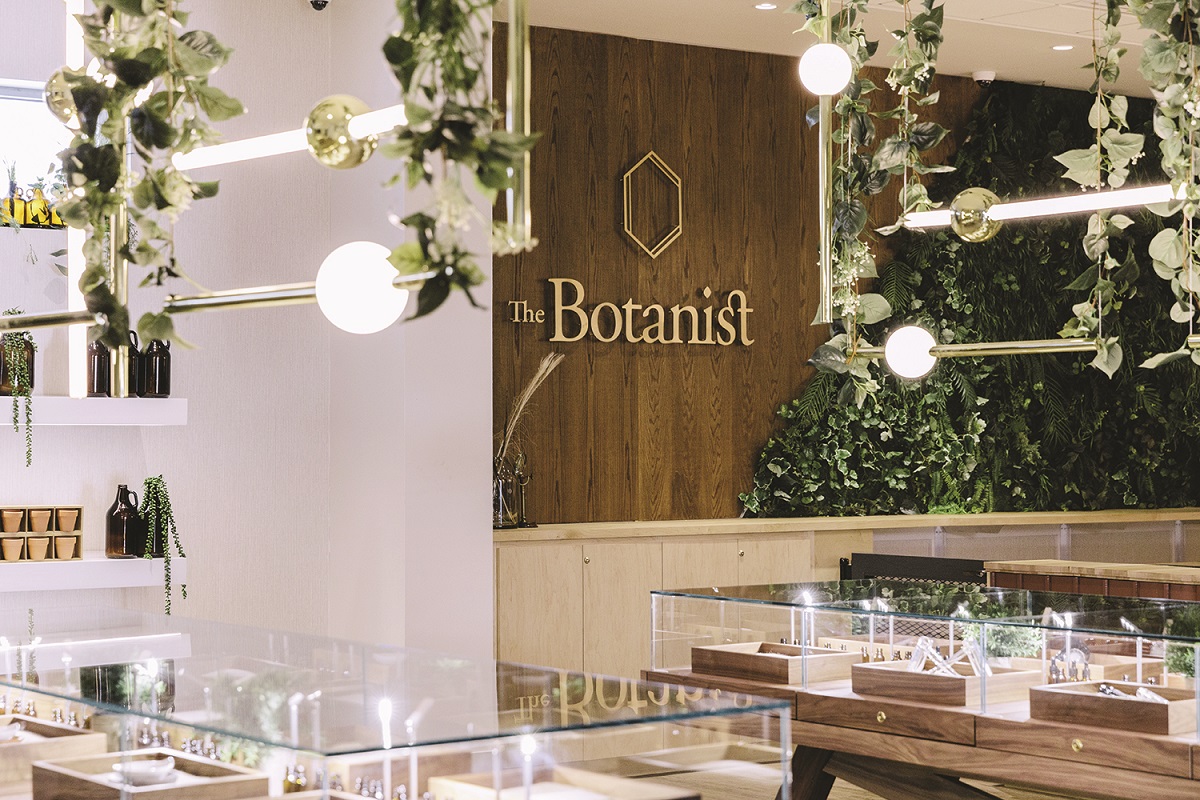
Bright, airy spaces awash in natural colors and brimming with rustic wood, rattan, and living greenery make The Botanist dispensaries resemble sun-filled greenhouses. Among the first wave of experiential retail operations, the Acreage Holdings properties encourage curiosity and evoke magical realism.
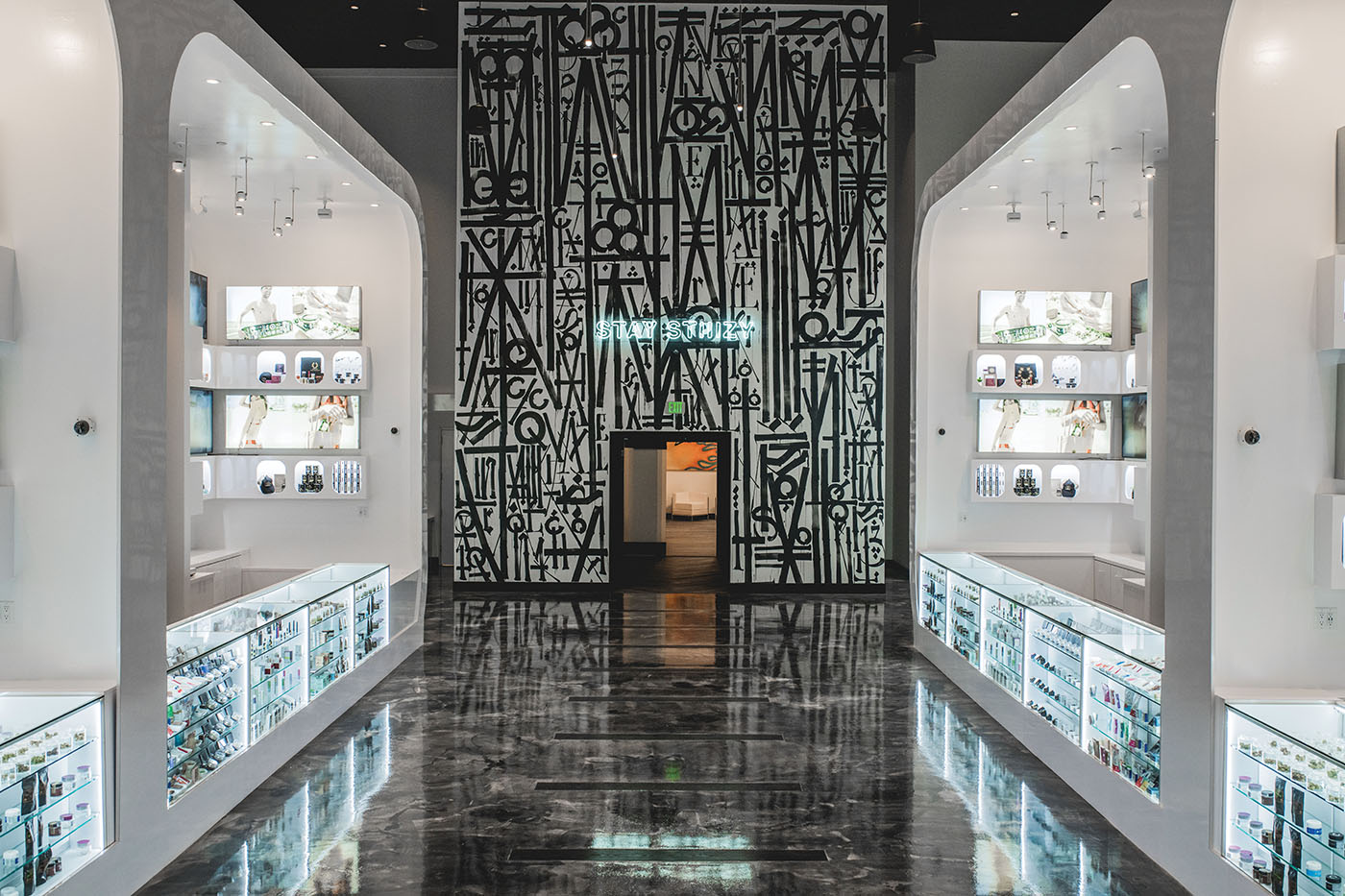
Stiiizy DTLA’s target market is young, hip urban professionals. The cavernous downtown Los Angeles store incorporates Instagrammable vignettes that help the brand generate social media buzz. Architect Gi Paoletti’s design also includes movable displays and other features that allow the store to reconfigure the space for special events.
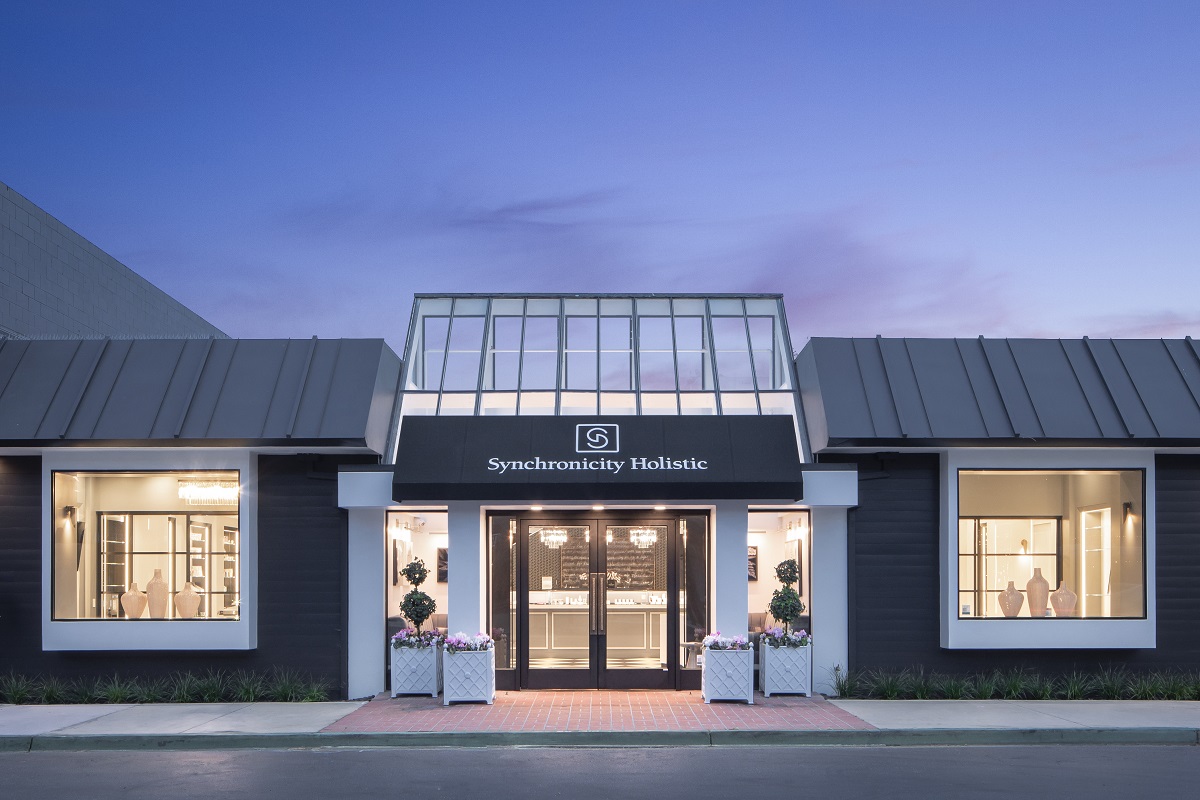
Synchronicity Holistic was designed specifically for well-to-do women ages fifty and older who incorporate medicinal cannabis into their health and wellness routines. The shop’s elegant color palette, clean lines, and minimalist décor resemble an upmarket jewelry or cosmetics store. The familiar-feeling environment helps normalize cannabis for high-end consumers.
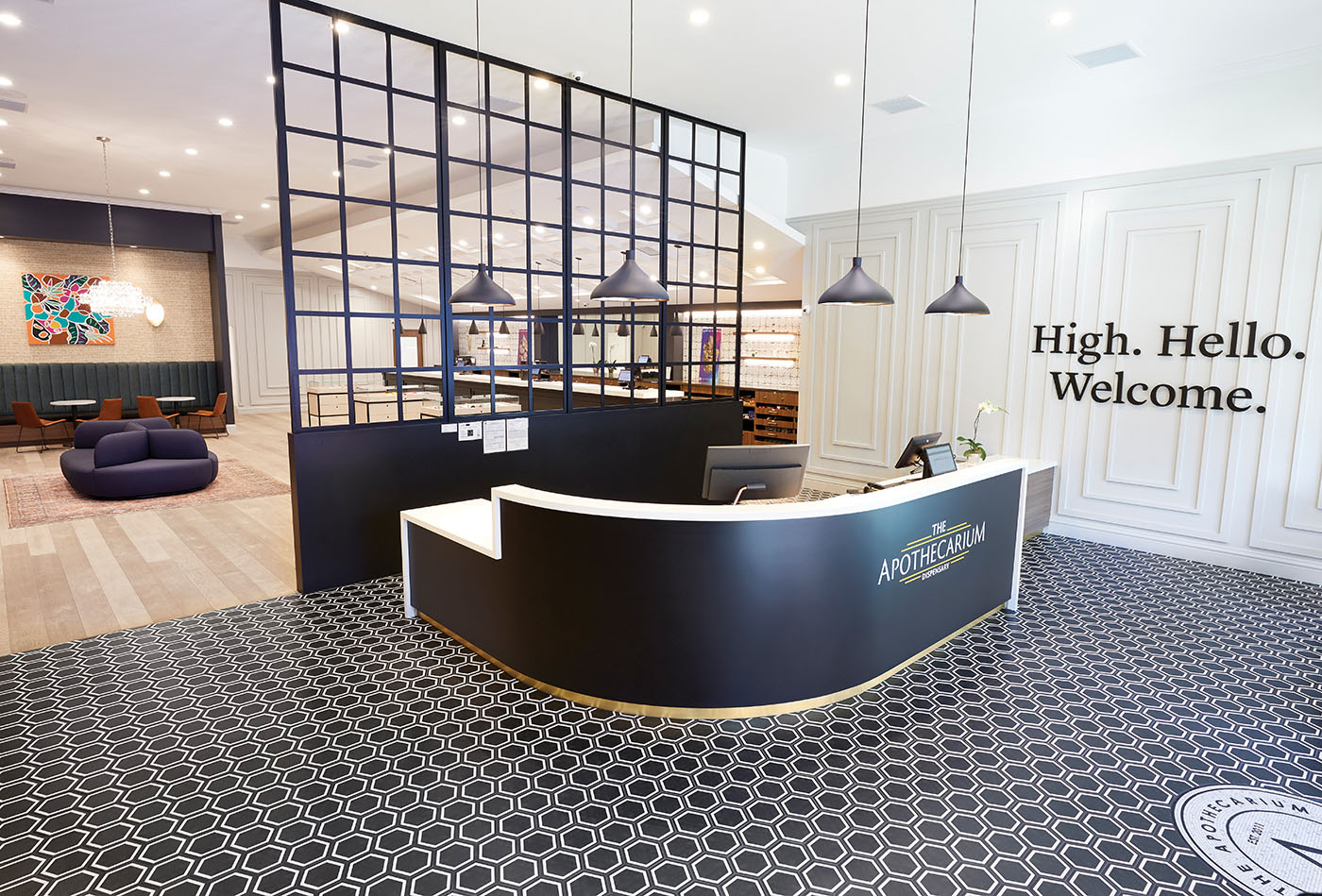
Slap-bang in the middle of the University of California’s Berkeley campus, The Apothecarium caters to an affluent, youthful clientele that continues to honor the area’s countercultural roots. The store opened at the height of the pandemic, relying on its simple, efficient floor plan and striking interior finishes to communicate despite social distancing restrictions.
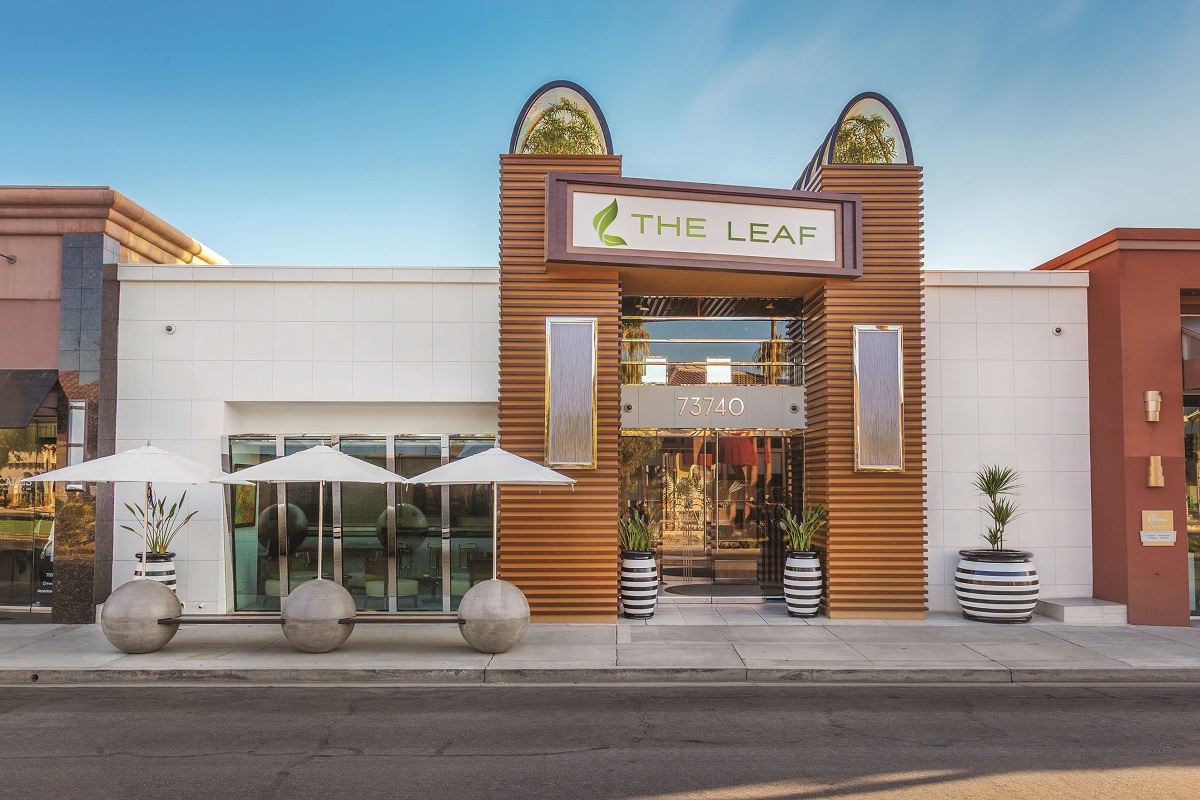
One of the country’s most striking and ambitiously located dispensaries, The Leaf was the final project of the late casino, racetrack, and resort developer and philanthropist R.D. “Dee” Hubbard. Among a growing number of dispensaries that more closely resemble jewelry stores than cannabis shops, The Leaf is most notable for its location: rubbing shoulders with Saks Fifth Avenue and Luis Vuitton in Palm Desert’s ultra-tony El Paseo shopping district.
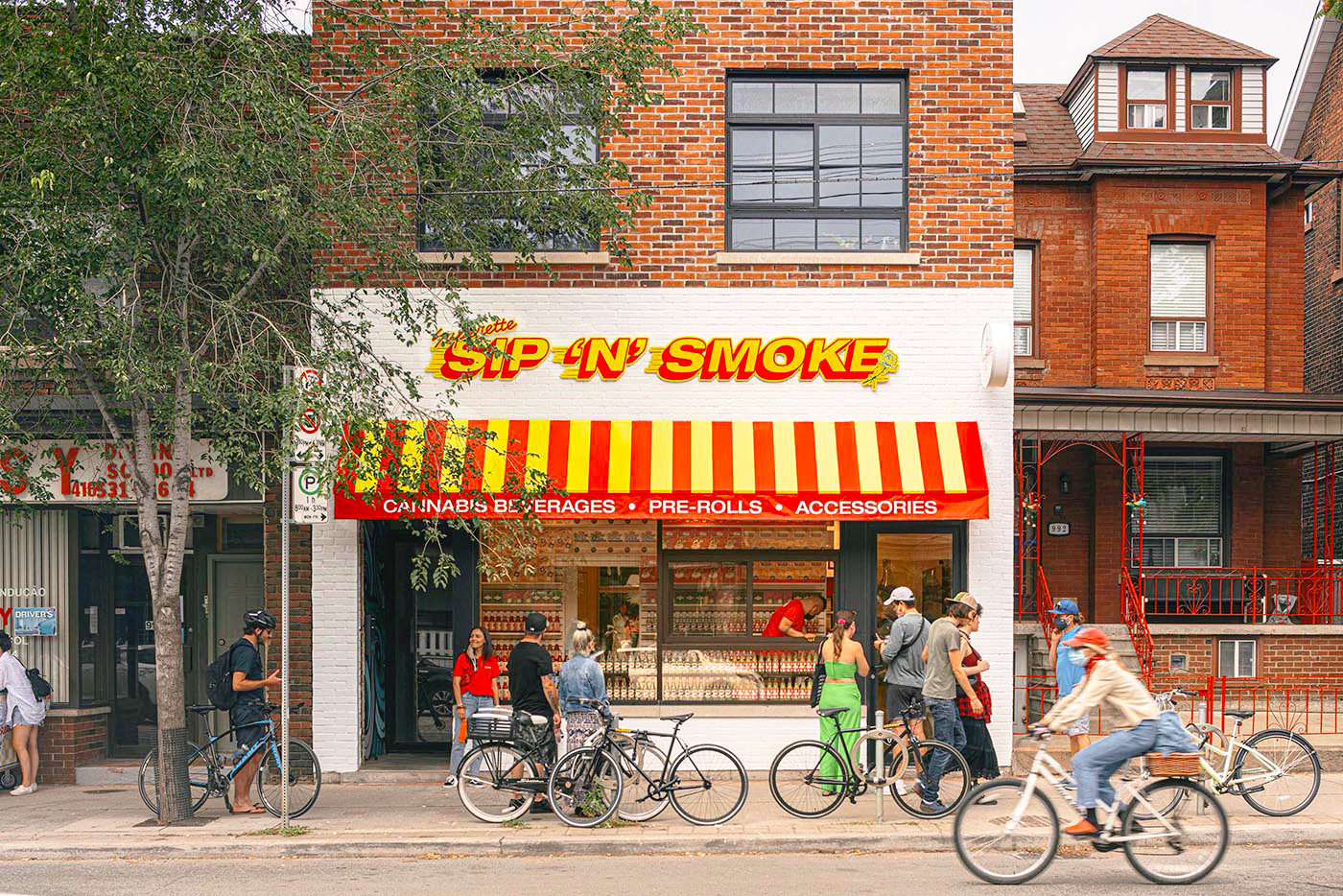
Superette is unquestionably, unmistakably fun. From the retro-futuristic dummy packaging and fake fruit to coin-operated arcade games and hype merch lines, the brand oozes irreverence at every touchpoint. Its saccharine primary color schemes create a surreal, immersive landscape unlike anything else in North America. Unfortunately, the founders’ creativity didn’t equal profit, and SNDL acquired the six-store chain out of bankruptcy early this year.
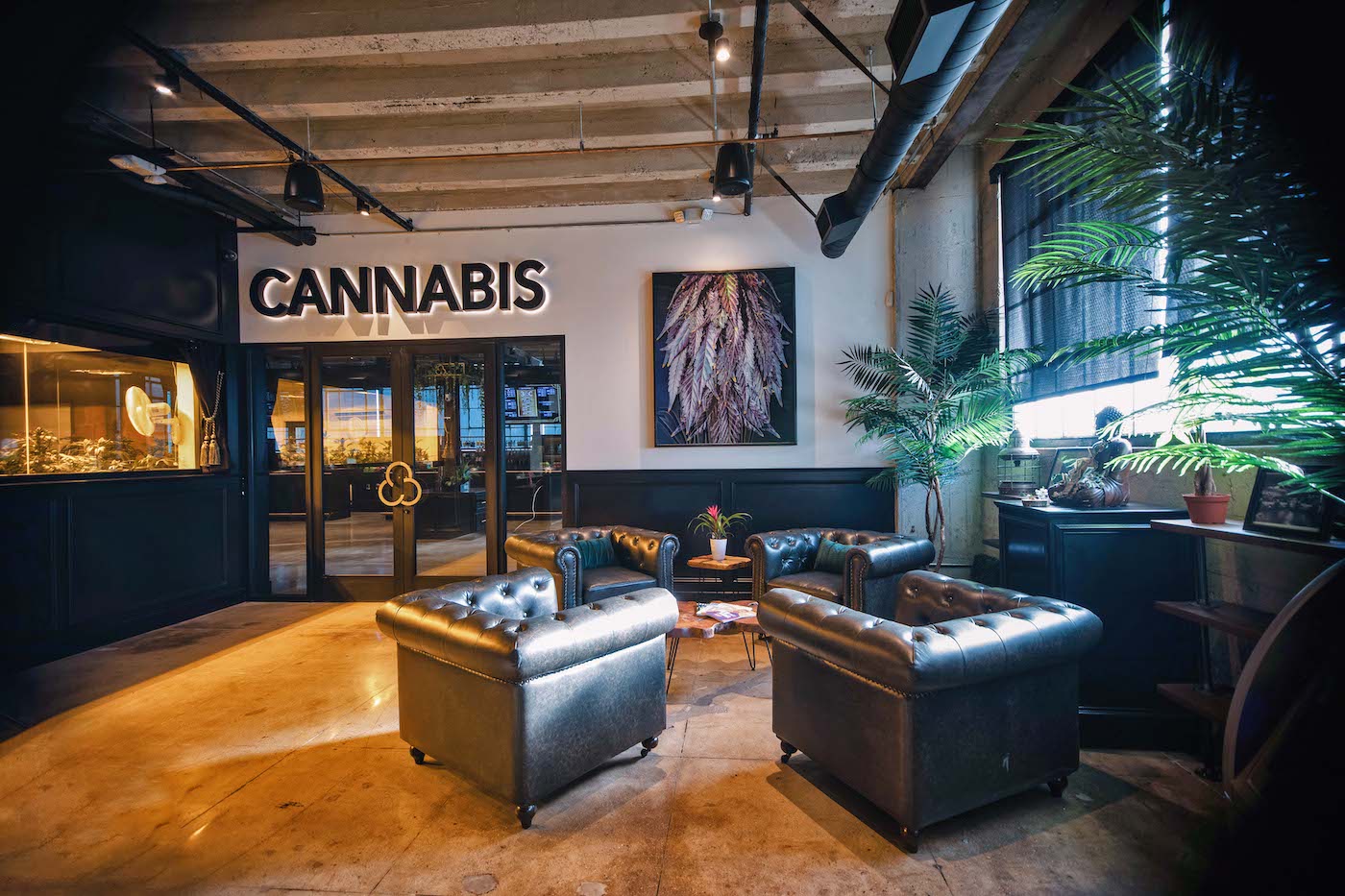
Coast to Coast’s expansive space in Los Angeles’s Arts District fuses history, artful design, and craft flower. Housed in an early-twentieth-century industrial building previously used as a factory and an art gallery, the dispensary’s standout features include an innovative hash bar and a large show grow.
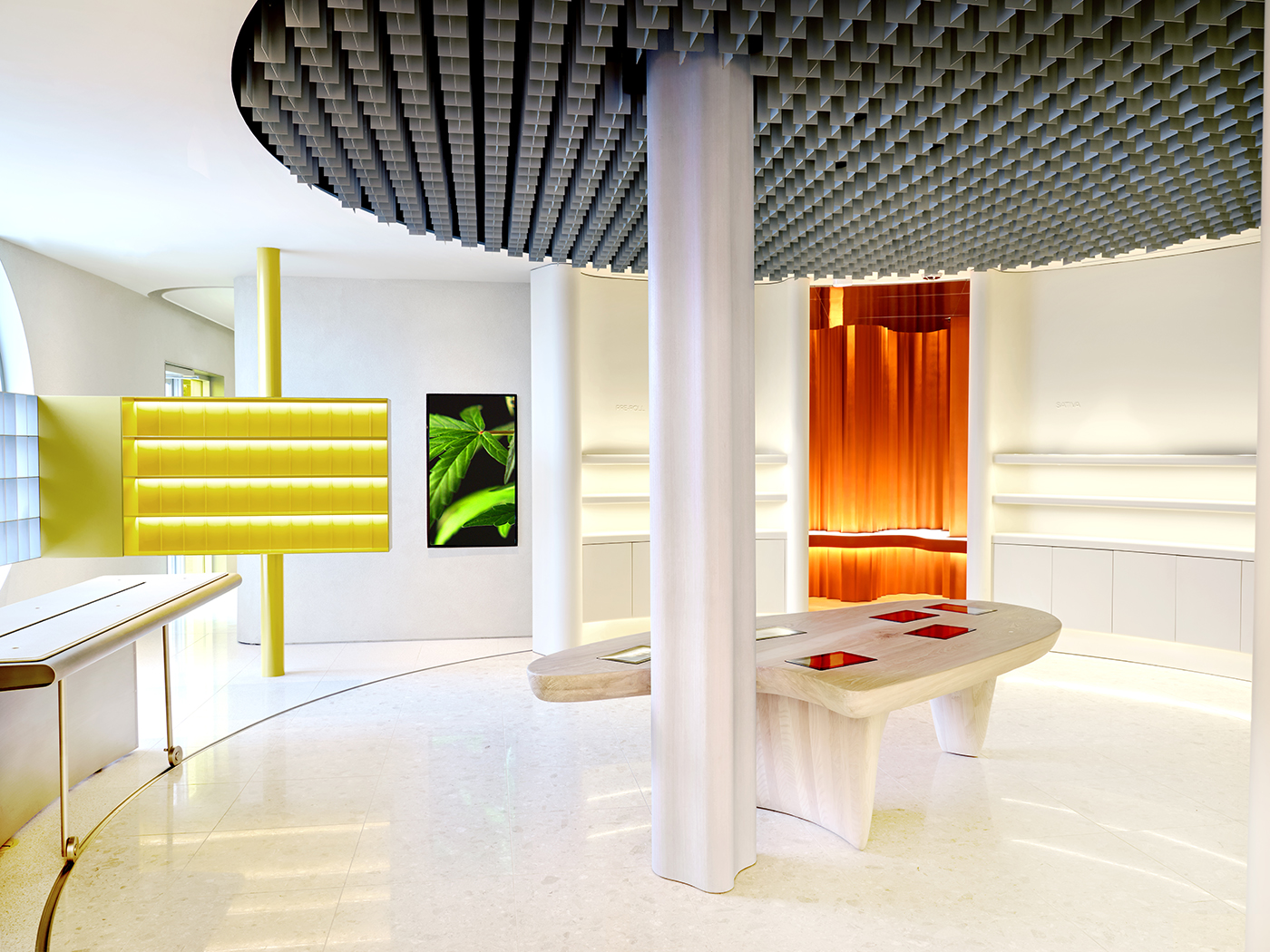
Along with Edition X, Alchemy represented a new wave of modernism in Canadian dispensary design. Conceived by sought-after multidisciplinary designer Paolo Ferrari, the shop is part art installation, part retail experience, and all playful, embodying an eccentric symphony of colors, shapes, and materials where soft and strong geometry coexist. Even the lighting is avant-garde, transitioning from day to night as customers move from zone to zone.
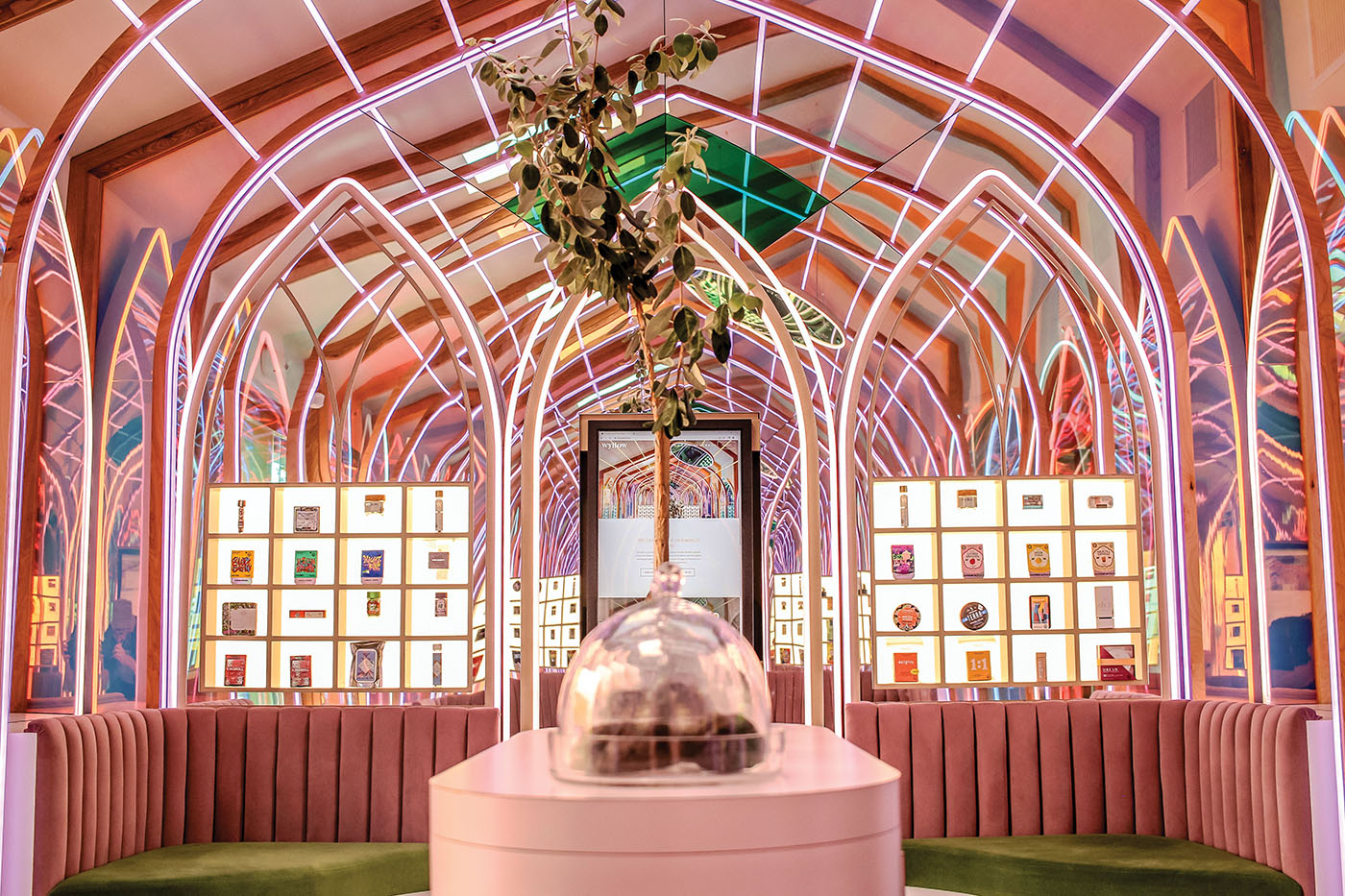
Wyllow may be smaller than the average suburban garage, but the shop’s tiny footprint hides a big personality and merchandise selection. Designed by Space Objekt, the 350-square-foot store’s unassuming façade resembles a boutique jeweler by day. But at night the building throbs with the neon glow of a psychedelic brand activation at a rave in a cathedral thanks to ceiling-height arches connected by neon strips and dichroic film.
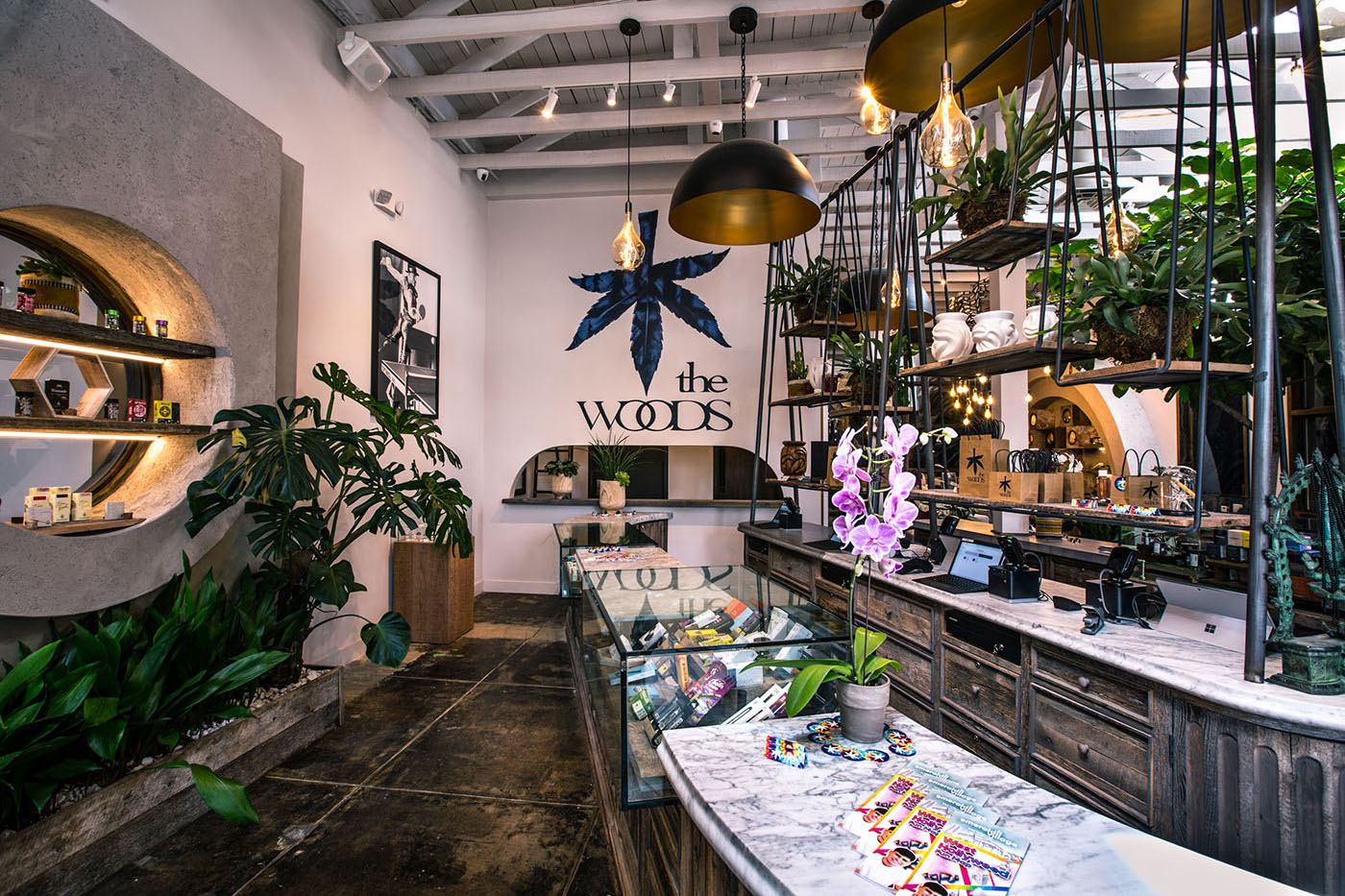
Co-founded by Emmy-winning actor Woody Harrelson and comedian Bill Maher, among others, The Woods is a masterpiece of intentional, sustainable design. The vintage 1929 building’s structure was modified very little, and interiors were constructed with repurposed materials. A Zen garden and consumption lounge add unique dimensions. Reflected star power helps make the shop a tourist magnet. Photo: Diana Dalsasso
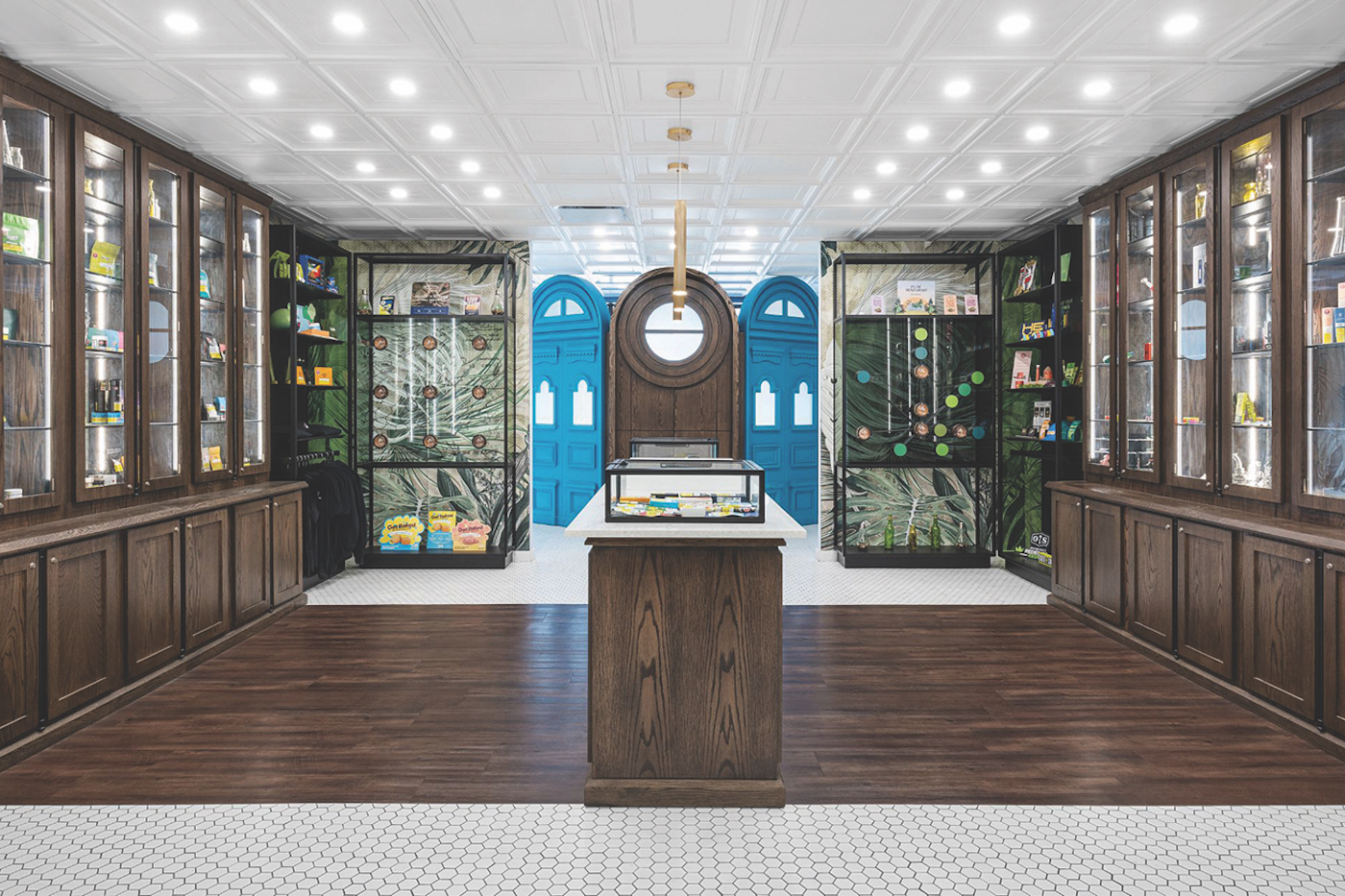
Behind impressively massive blue doors, The Herbary is elaborately designed to evoke a vintage apothecary. Brought together in collaboration with SevenPoint Interiors, the shop carefully blends modern touches and classic references to achieve an extraordinary warmth and depth while avoiding any “old-fashioned” vibes. The floor plan incorporates modular fixtures that can be rearranged as needed and scaled across the five-store chain.
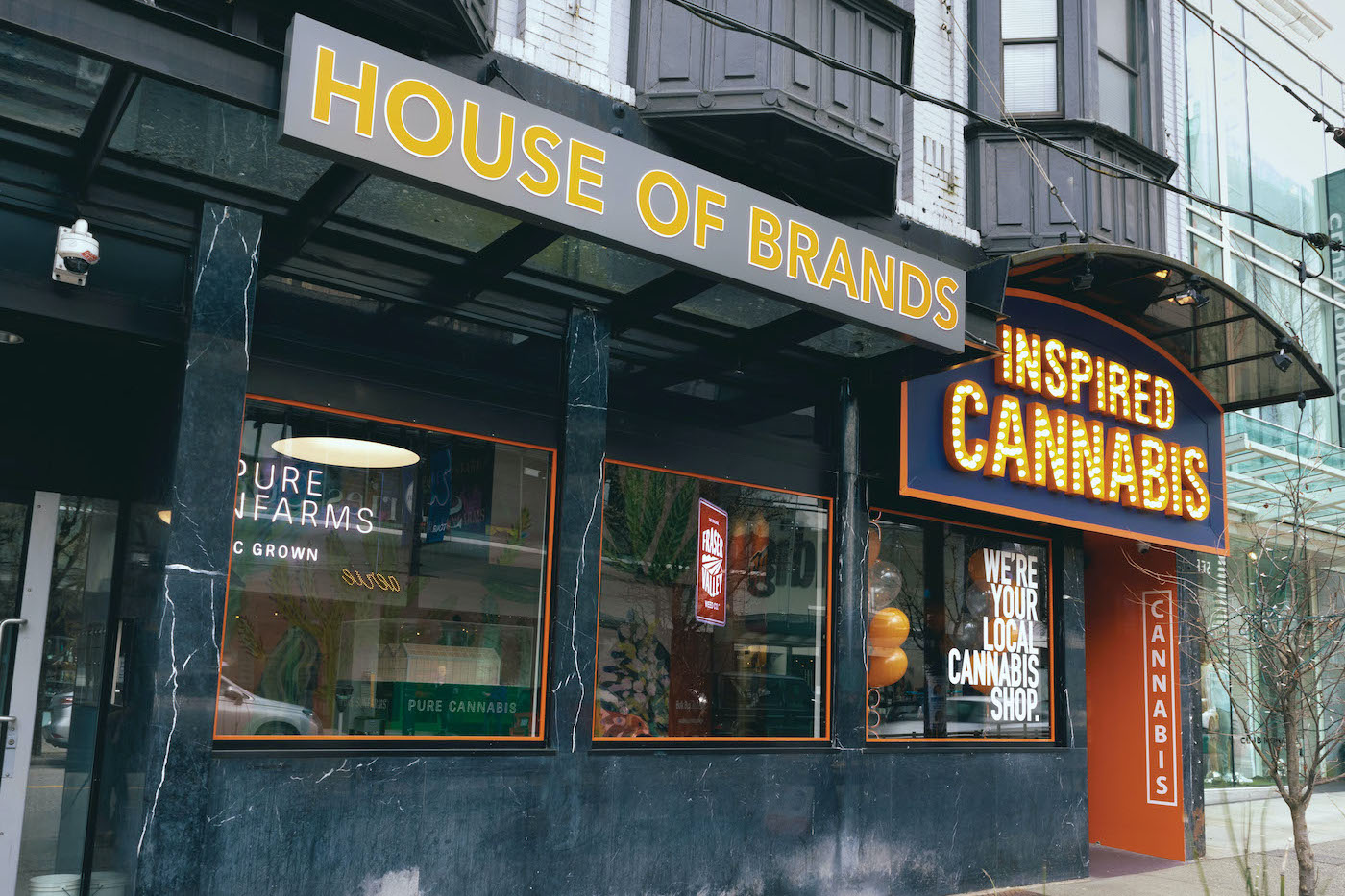
House of Brands is among the more novel stores in the industry. Inspired by Nordstrom’s shop-in-shop brand kiosks, the space is compartmentalized and intended for exploration, perusal, and contemplation within a guided customer journey. Laid out like a modern art gallery with installations, modules, floor-to-ceiling displays, and little windowed shelving units showcasing various products, every inch of the space pays homage to a brand.
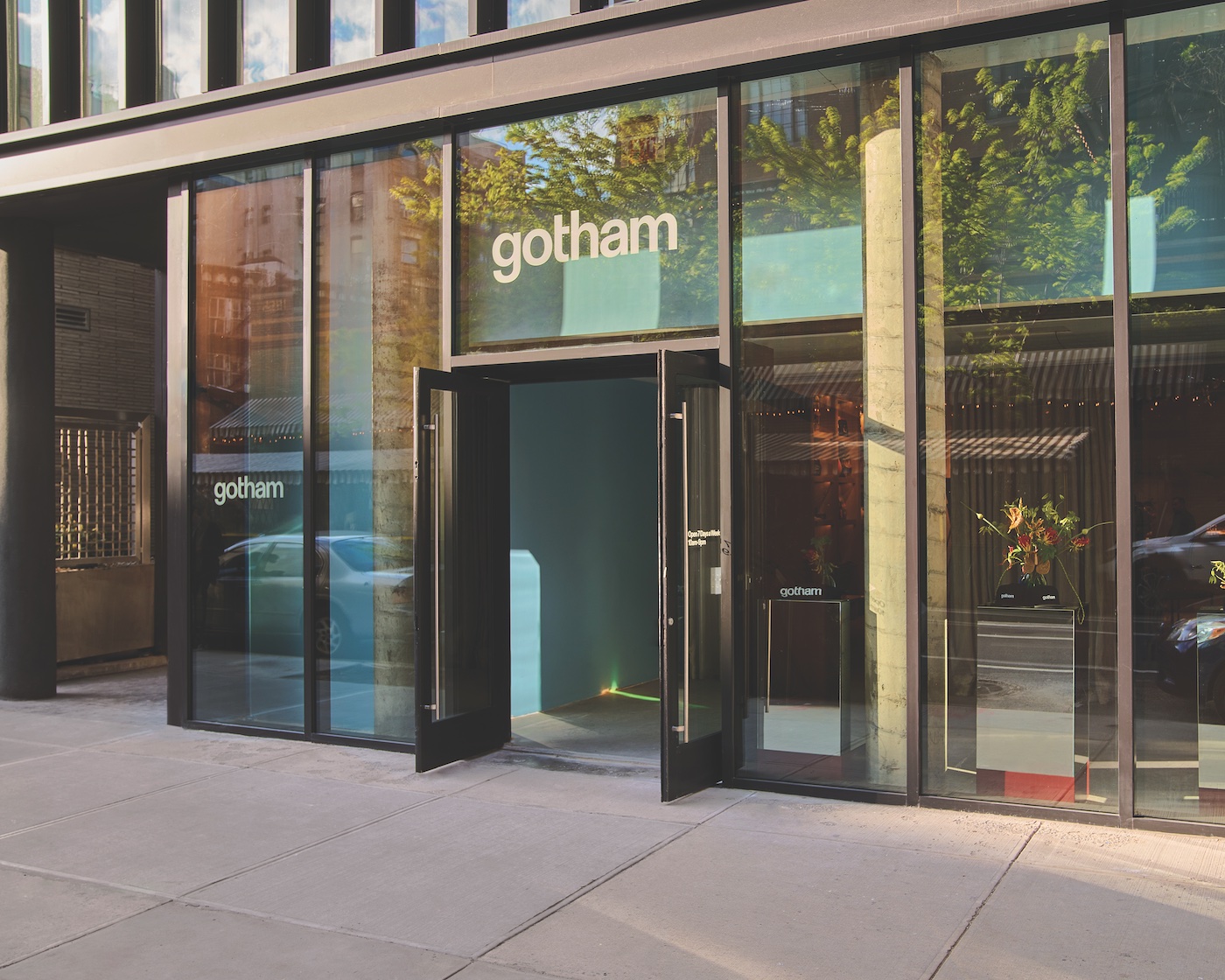
Gotham is precisely the kind of dispensary we imagined when New York legalized: effortlessly classy, confidently understated, and most definitely not “just a weed store.” The shop’s inventory is a mixture of well-curated consumable products and cannabis-adjacent apparel, household goods, and accessories, leaning heavily on the emergent “stoner nouveau” aesthetic that has blossomed in the Big Apple in recent years.
Photos: House of Brands:Ramtin Haj; Gotham: Chris Coe
Photos: The Apothecarium: Joe Budd; Superette: Alex Lysakowski; Alchemy: Joel Esposito; Wyllow: Chris Greenwell
Photos: Moe Greens: Nick Wadler Photography and Mike Rosati Photos; Stiiizy DTLA: Stuart Locklear
